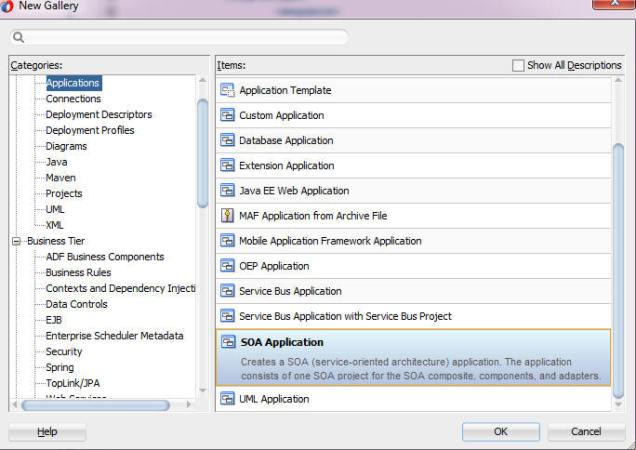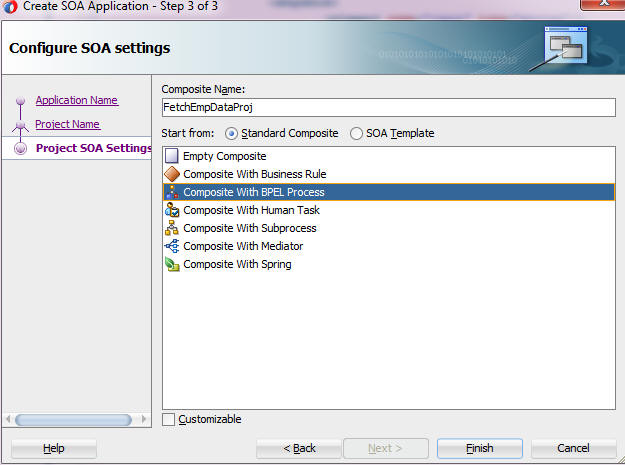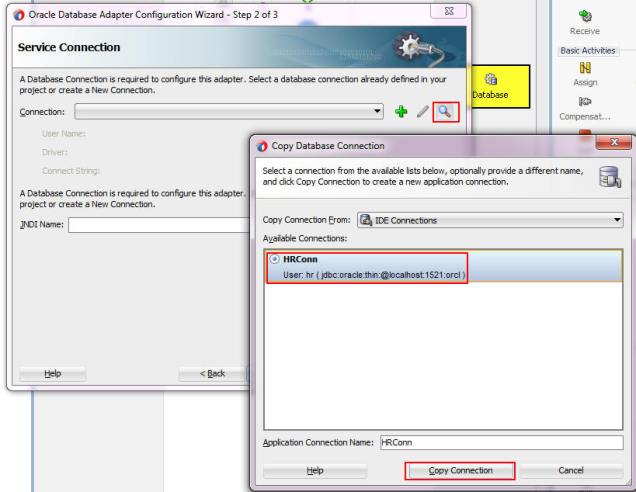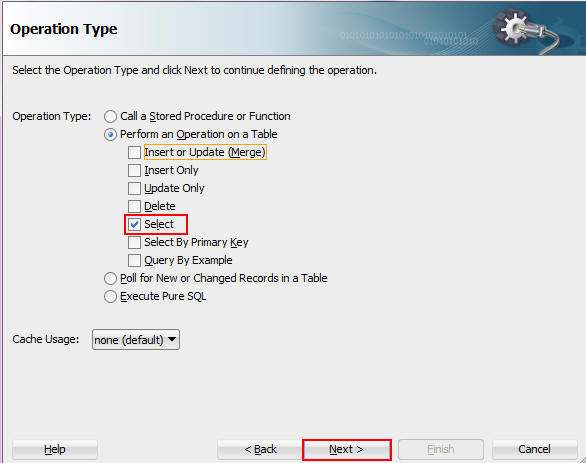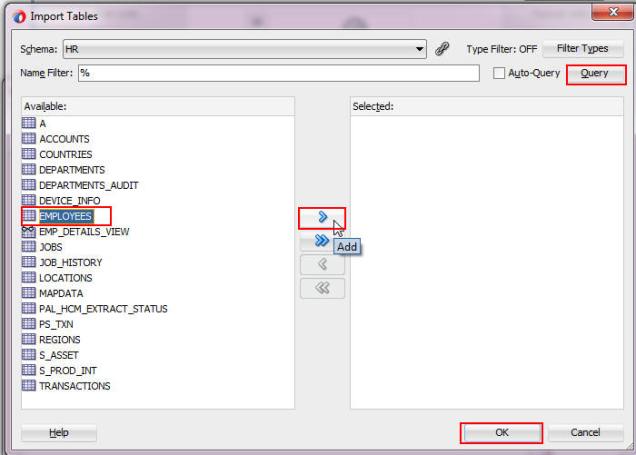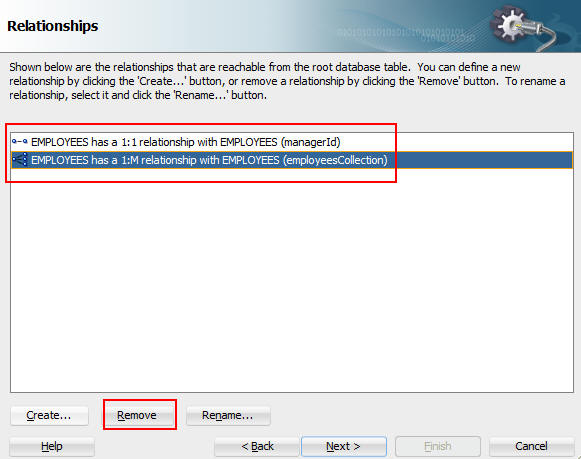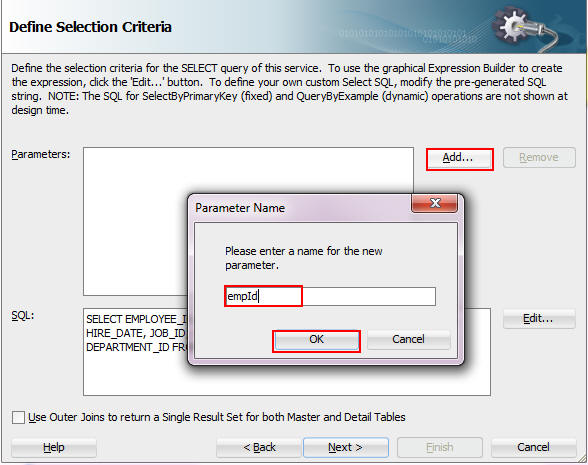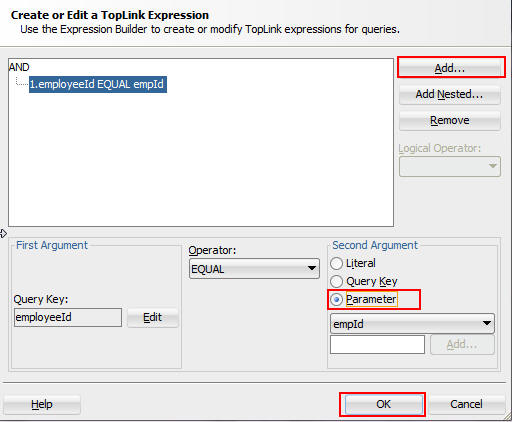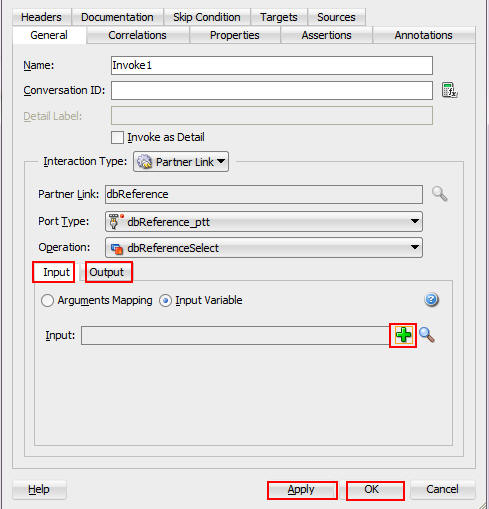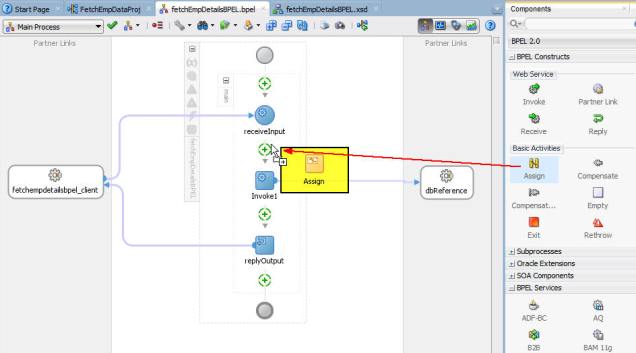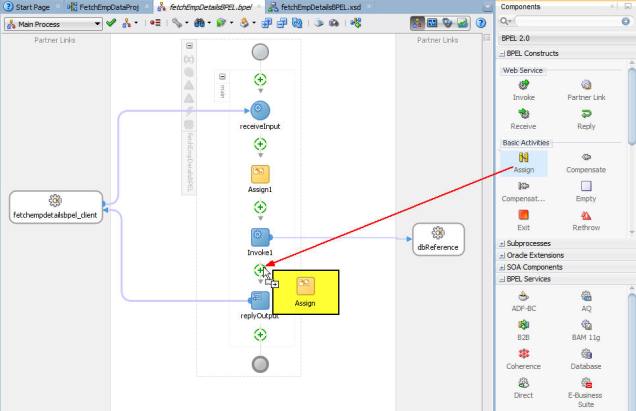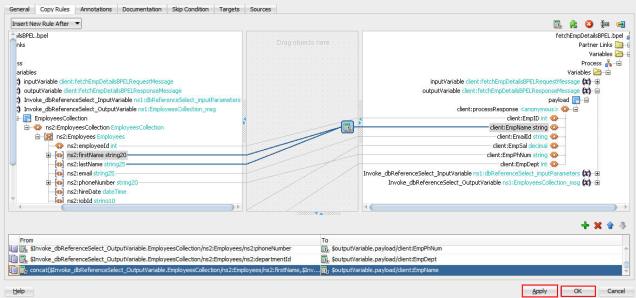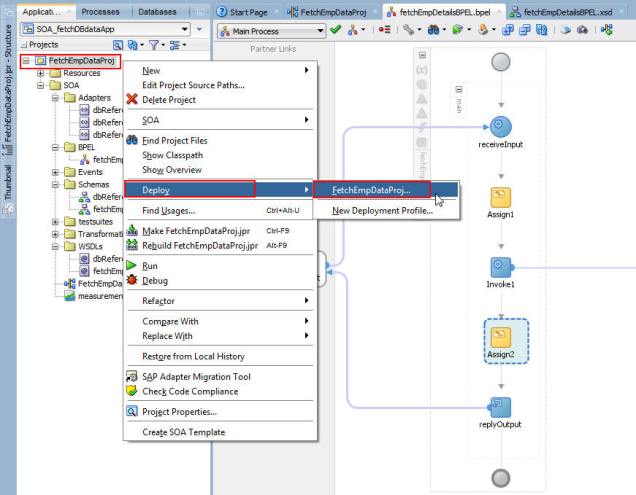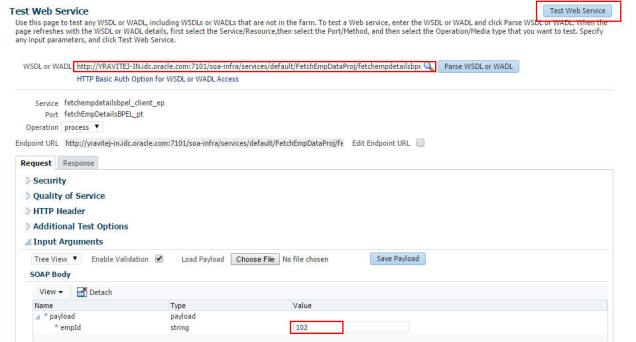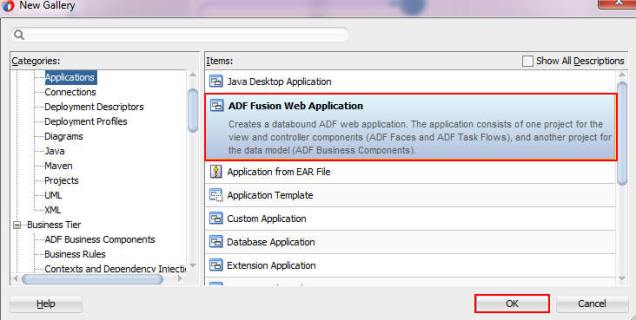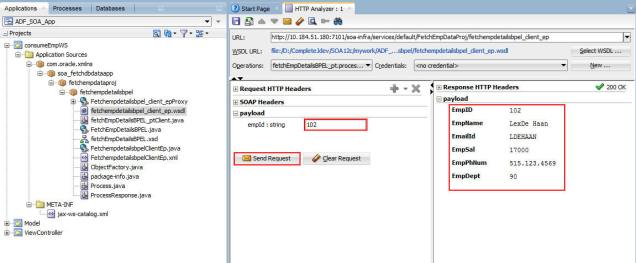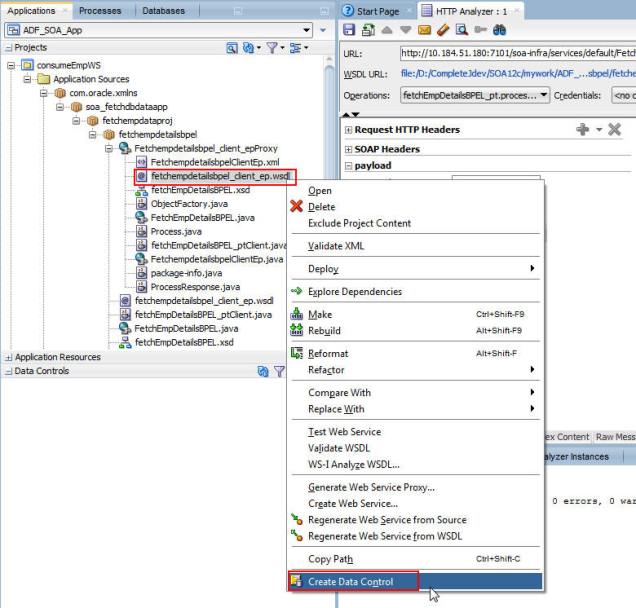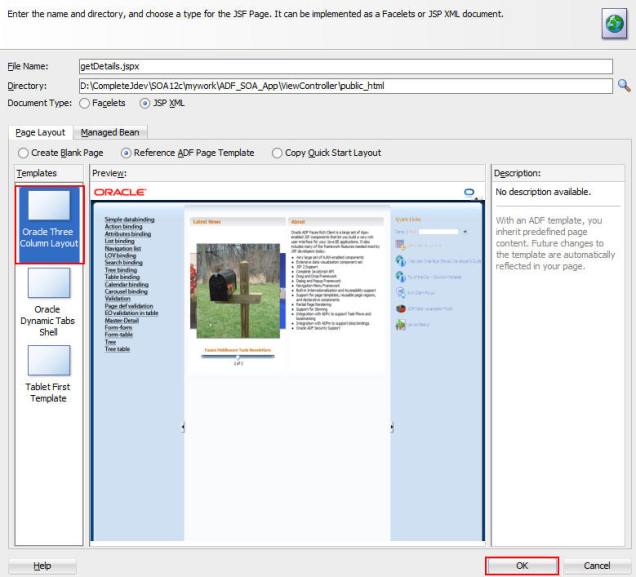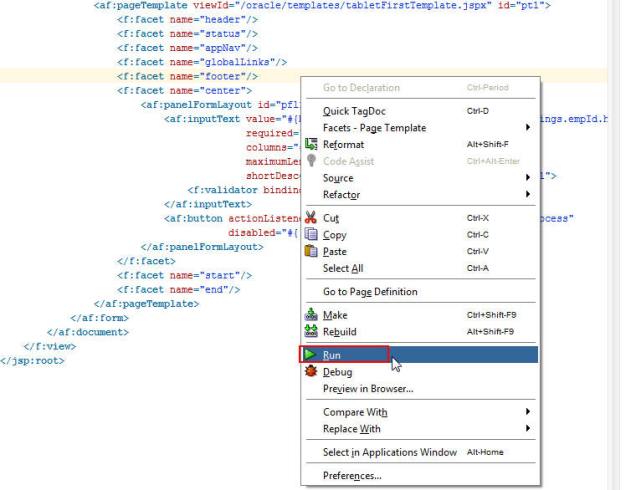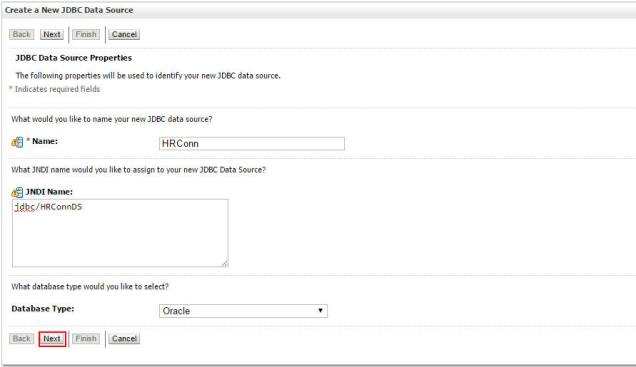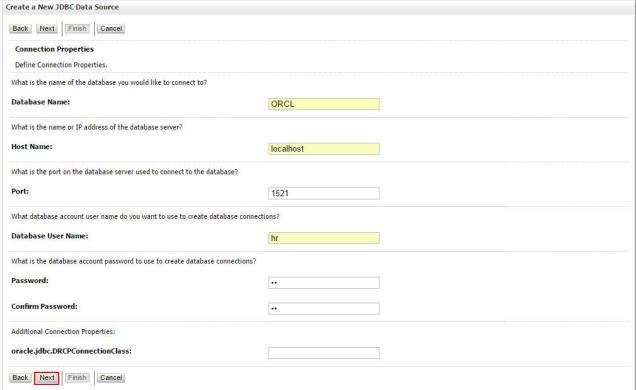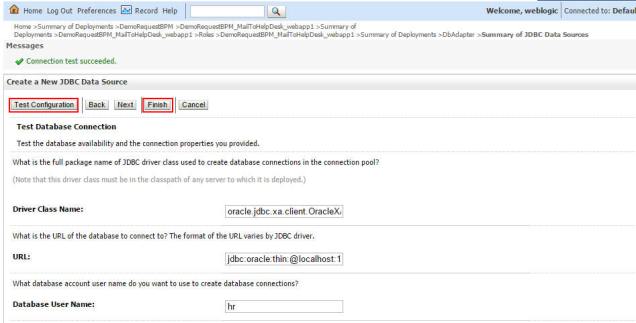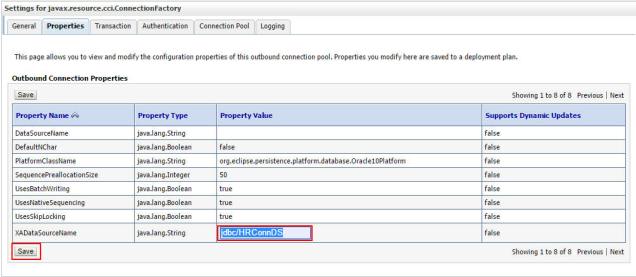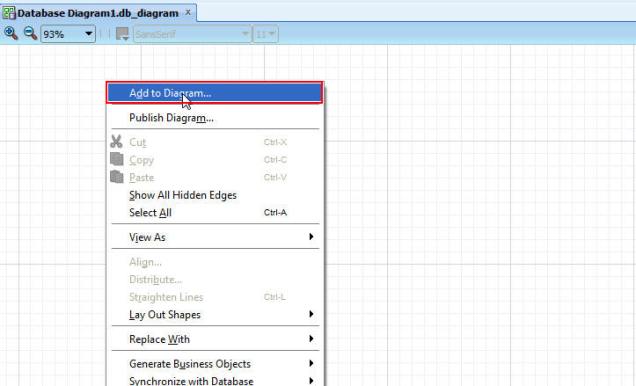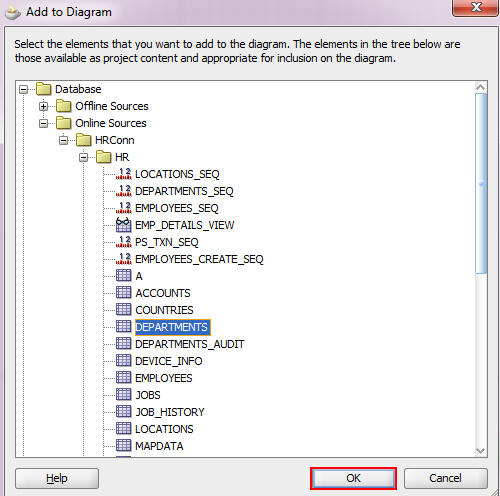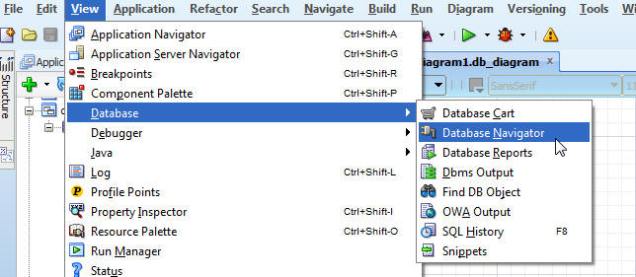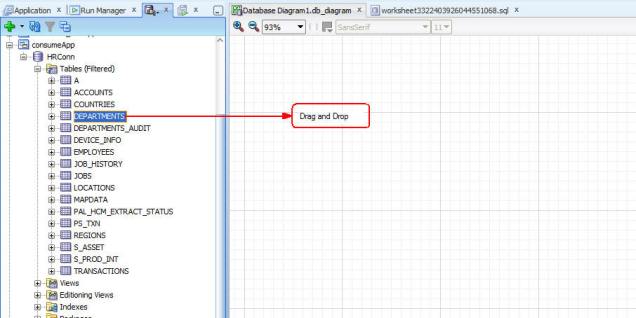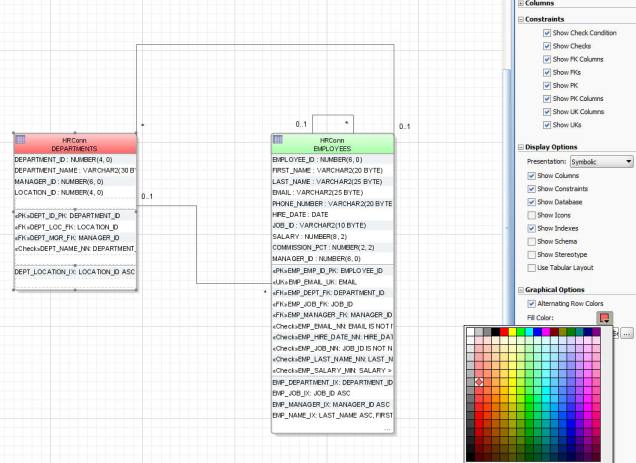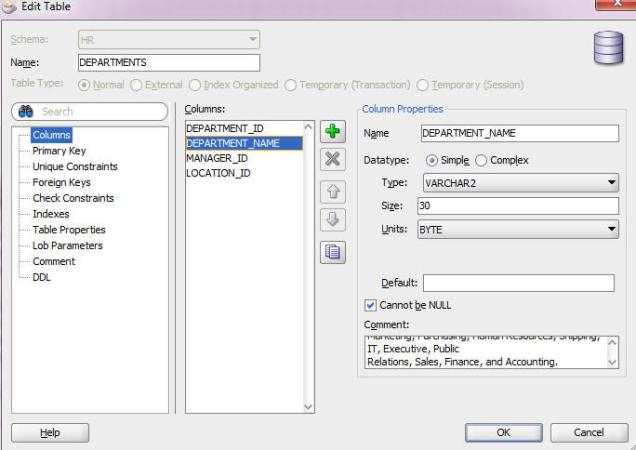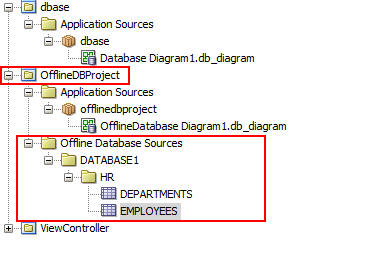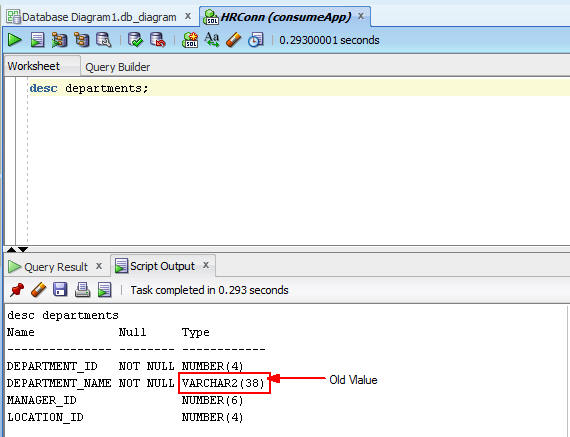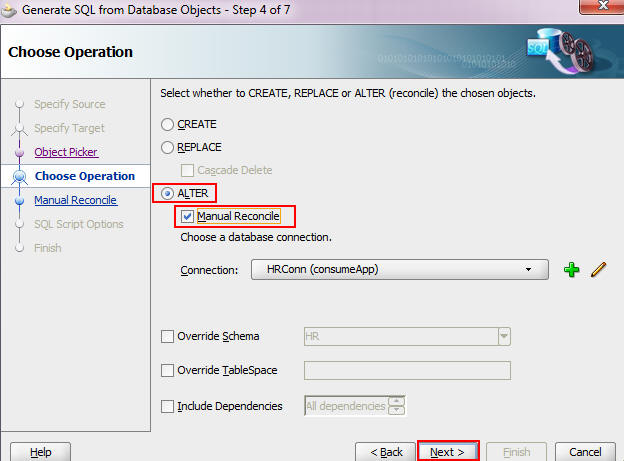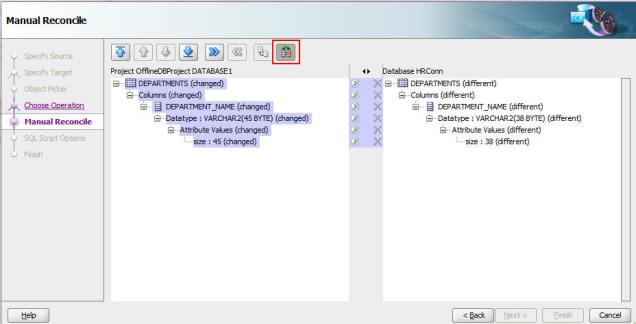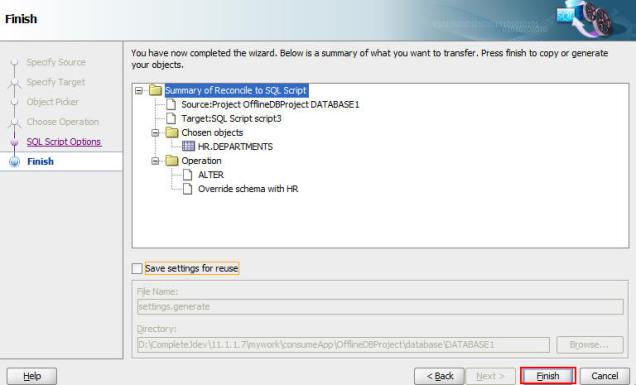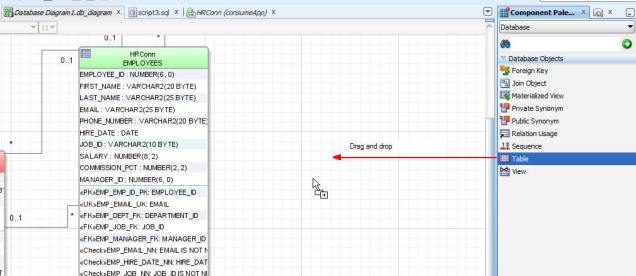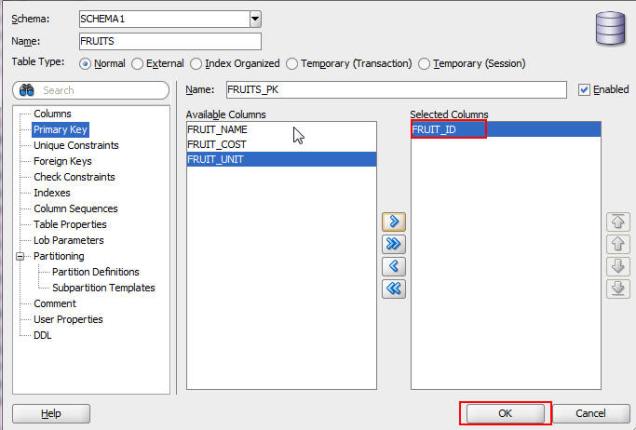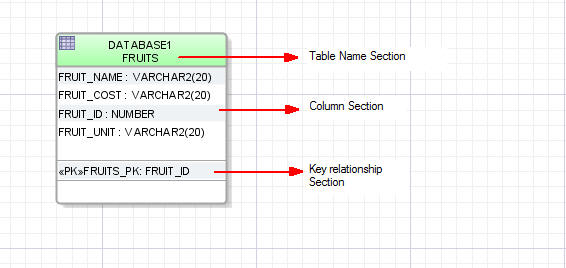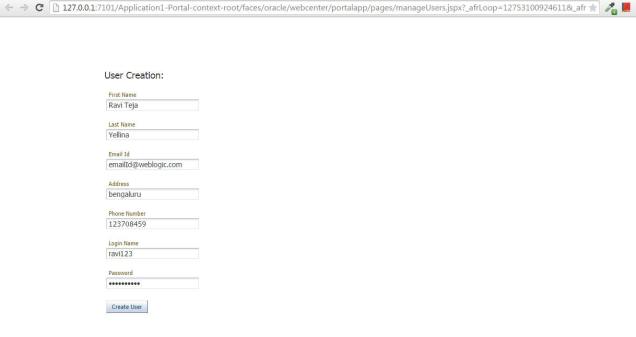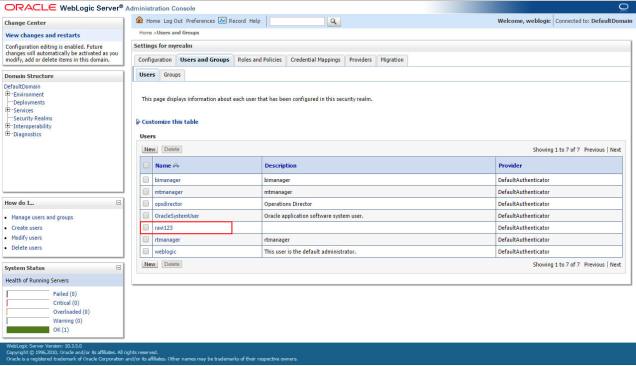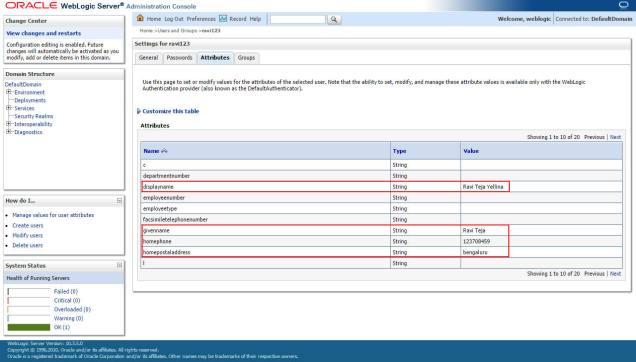Story of Project: We are going to pass the employee id from the ADF web application to SOA BPEL, which fetches more details of an employee from the database and returns them to ADF which are then shown on the ADF page. Tool used for this project is JDev 12.1.3
This Post includes the following
- SOA Application creation
- DB Adapter Configuration (for connecting to Database)
- BPEL Creation (WSDL generation)
- ADF Application Creation
- Consuming the WSDL and create data controls
- Test from the ADF Application
SOA Application Cretion:
Create a SOA Application with name ‘SOA_fetchDBdataApp’
Create a Project ‘FetchEmpDataProj’ and select the Composite With BPEL Process while project creation
Create a BPEL with the name ‘fetchEmpDetailsBPEL’ and select Template as Synchronous BPEL Process and then click OK
The BPEL will be created with receiveInput and replyOutput as default schema components.
Navigate to Databases tab and create a new Database Connection with the name with which we created in console
Now Navigate the Database Adapter to the bpel flow
Note: Before proceeding from this step you should configure your DB Adapter in the console first. Please go through the DB Adapter configuration steps given at the end of the post.
Give the dbreference name and click on Next
Click on Search Icon and select the created Database Connection and click on Copy Connection
Check only Select check box as we are doing only select operation in this example and click on Next
Click on Query button to select the existing table in DB and move it to the selected area by clicking on right single row.
Now remove the unneccessary relationships by selecting each and clicking on remove button
Click on Add button for creating a bind variable to the query which basically used to pass a variable dynamically. Generally to apply where condition its been used
Click on Edit button beside to query click on Add button and then Check the Parameter option and select the created parameter ’empId’ from dropdown
You can observer the modified SQL query
Click on Next and finally Click on Finish
Drag and drop the Invoke BPEL Constructor below to input and map to the dbreference

Configure the Input and Output for this DB adapter. Click on + symbol and give names to the input and output variables.
Now drag and drop the Assign Constructor below to input
Double click on Assign which opens a Edit Assign popup in which map the input variable value to input of database adapter and click on Apply and OK
Now assign the output of DB Adapter to the reply output of BPEL. For that use Assign constructor. Here the output of DB adapter has many fields so create as many outputs in the schema also to map from DB Output to BPEL output.
Open the schema file (.xsd file) and add the the required inputs and outputs in its source view
Now drag and drop the Assign Constructor to below to DB adapter to map the output of DB Adapter to BPEL output.
And then double click on it for mapping. a popup window opens where map the output of DB adapter to output variable of BPEL. Map all fields directly. There is field named ‘EmpName’ at the output section for which the input should be from two fields (firstname, lastname) so drag and drop the Expression icon to the output field ‘EmpName’
On Drag of Expression onto field a popup opens where click on concat and then click on first name and last name. The format should be concat(val1, val2) which combines the output of these two fields and stores in EmpName field.
Finally click on Apply and OK
Deployment:
Save the project and right click on project-> Deploy
Click on Deploy to Application Server.
Check the box Overwrite any existing composites with the same revision ID. which basically useful for generating same wsdl url for every deployment. Click on Next
Click on Integrated weblogic server. Here you can add any server and deploy to that.
Select the domain (Default Server) and click on Finish which finishes the deployment.
Open Enterprise Manager on browser. Select the project and click on Test
Copy the WSDL to clipboard. Give the input as 102 and click on Test Web Service
It opens the Response tab with the result. you can Launch Flow Trace to view the complete step by step response
ADF Application Creation:
Create ADF Fusion Web Application ‘ADF_SOA_App’ keep the default names for the project.
Create a custom project ‘consumeEmpWS’
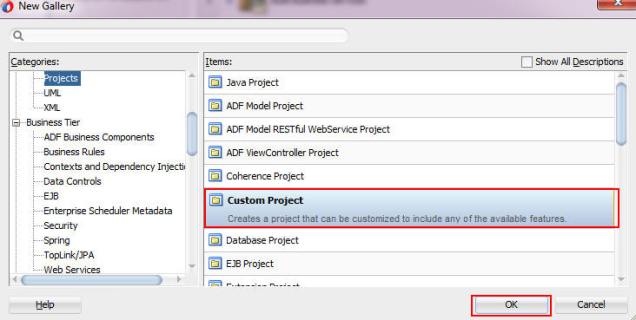
Right click on the created project -> New -> Select Web Service Client and Proxy

Paste the copied WSDL URL in the WSDL Document URL field and click on Next and proceed by keeping default settings and Finish.
Right click on the WSDL and click on Test Web Service which opens a Http Analyzer.
Give the input and click on Send Request which returns Response at right side.
Now right click on the WSDL file and click on Generate Data Controls which generates the data controls which can be used on in the ADF page.
You can see the updated data Controls Section
Now Create a jspx page under View Controller Project.
Check the JSP XML and name it ‘getDetails.jspx’
Go to Source code of the page and then drag and drop the web service data controls on to the center facet of the page and select the option as ADF Parameter Form.
Now right click on the page and click on Run
In the page pass the Employee Id and you can see the more details which are fetched through BPEL and displayed on the page.
DB Adapter Configuration:
This includes creation of Data Source, DB Adapter Outbound Connection Creation, mapping created Outbound Connection Creation with created data source.
Open Console and Create Data Source for connecting to the database.
Create a New Generic Data Source
Give the connection name as ‘HRConn’ and JNDI name as ‘jdbc/HRConnDS’ for the data source
Give the Database Connection details and click on Next
Click on Test Configuration which shows a success message for the successful connection. Click on Finish.
Click on DbAdapter from the deployments
Click on Configuration -> Outbound Connection pools -> New and then create an outbound connection
Click on Next
Give the JNDI name for the Outbound connection as eis/DB/HRConn
Click on the Created Outbound Connection Pool
Give the property value for XA Data Source name as with earlier created DataSource jndi name ‘jdbc/HRConnDS’ and click on save
Now again go to deployments and select DbAdapter and click on update which ends the DB Adapter Configuration.
